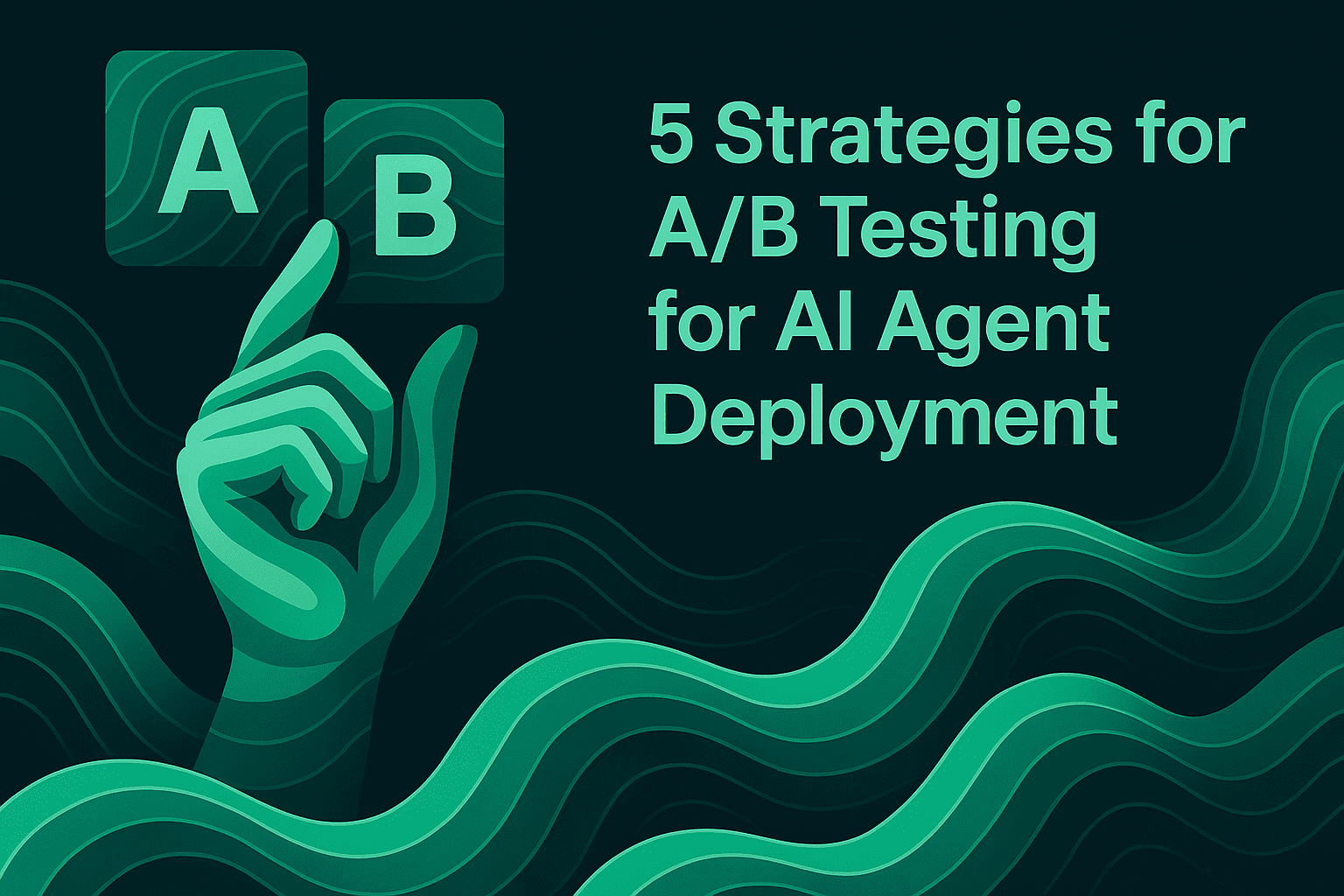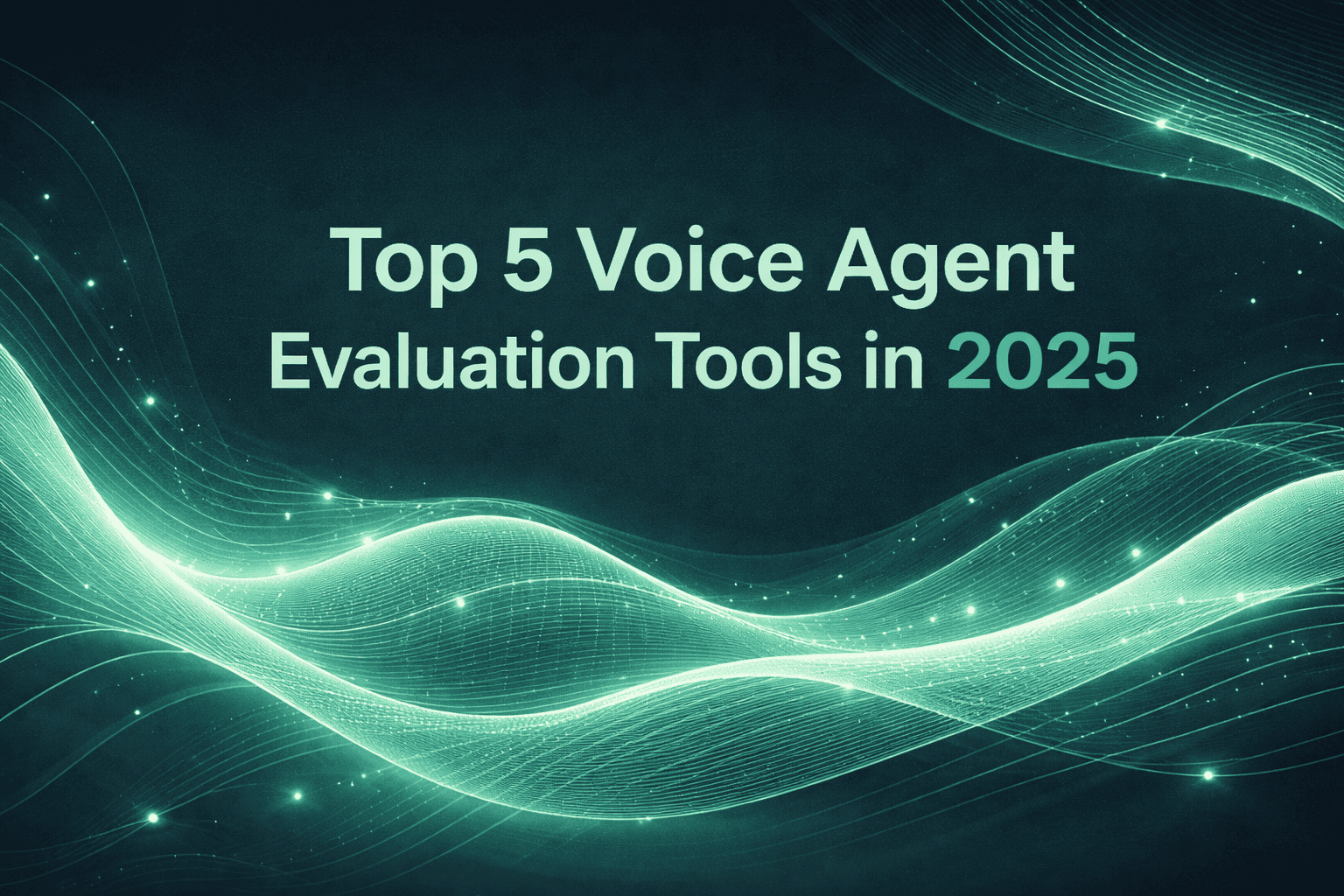5 Strategies for A/B Testing for AI Agent Deployment

TL;DR
A/B testing for AI agents compares controlled variants of prompts, workflows, and models against defined success metrics. Combine offline simulation, targeted evals, and in‑production observability to detect regressions, quantify impact, and iterate safely. Use an AI gateway for consistent routing, cost and latency telemetry, and repeatable rollouts. Close the loop with human‑in‑the‑loop reviews and dataset curation to sustain quality over time.
Why A/B testing matters for AI agent deployment
A/B testing reduces risk when shipping changes to prompts, tools, and agent policies. It quantifies whether a variant improves task completion, reduces latency or cost, and minimizes hallucinations. Coupling experiments with distributed tracing and automated evals yields defensible decisions that align with user outcomes and reliability objectives.
- Bold goals: define success as task success rate, first‑contact resolution, latency p95, cost per session, hallucination detection rate, and escalation rates.
- Controlled changes: isolate one variable (prompt, tool config, model, memory policy) per experiment to attribute causality.
- Layered evidence: use synthetic simulations pre‑release, then limited‑scope production rollouts with quality gates to confirm impact.
Core architecture for agent A/B testing
A robust setup spans experimentation, simulation, evaluation, observability, and data management. This supports technical teams across pre‑release and production lifecycles.
- Experimentation: organize and version prompts, compare output quality, cost, and latency across multiple models and parameters in a unified workspace. See Maxim’s advanced prompt engineering in Playground++.
- Simulation: test agents across persona‑specific, multi‑step scenarios; re‑run from any step to reproduce issues and identify root causes. Explore agent simulation and evaluation.
- Evaluation: mix deterministic rules, statistical checks, and LLM‑as‑a‑judge for nuanced quality assessments, including human review for last‑mile decisions. Learn more under simulation and evaluation.
- Observability: trace sessions and spans, inspect prompts and tool calls, and run periodic quality checks against production logs. Use agent observability.
- Data Engine: curate multi‑modal datasets, continuously evolve from logs and eval outcomes, and create targeted splits for repeatable testing.
A/B testing strategies: from pre‑release to production
This section outlines modular, self‑contained strategies that teams can adopt across the deployment lifecycle.
Strategy 1: Prompt‑level A/B with offline simulation
- Objective: improve task completion and reduce hallucinations without user exposure.
- Method:
- Version prompts and define hypotheses tied to measurable outcomes.
- Generate representative synthetic scenarios across personas and edge cases.
- Run evaluators on session and span levels; add human checks for ambiguous tasks.
- Compare variants on completion rate, instruction adherence, and hallucination detection.
- Tools:
- Use Maxim’s prompt versioning and experiment comparisons in Playground++.
- Run multi‑scenario simulations and iterative replays with agent simulation and evaluation.
- Centralize logs and traces via agent observability.
Strategy 2: Workflow‑level A/B for tool and policy changes
- Objective: validate tool orchestration, memory windows, and retrieval policies.
- Method:
- Create workflow variants that adjust retrieval thresholds, tool sequencing, or fallback rules.
- Define span‑level metrics: tool success rate, API error rate, retries, and backoff behavior.
- Evaluate with deterministic rules for constraint adherence and LLM‑judge for semantic quality.
- Tools:
- Trace tool spans and decisions with agent observability.
- Configure flexible evals and dashboards to visualize multi‑agent trajectories within agent simulation and evaluation.
Strategy 3: Model routing A/B via an AI gateway
- Objective: reduce latency and cost while maintaining quality.
- Method:
- Route traffic across candidate models using a unified API and compare p50/p95 latency, token cost, and success rates.
- Enable automatic failover for resilience; cache semantically similar responses to reduce duplicate work.
- Tools:
- Use Bifrost’s Unified Interface for consistent APIs and Multi‑Provider Support to test across providers.
- Configure Automatic Fallbacks and Load Balancing to keep sessions stable during experiments.
- Track usage and enforce access via Governance and Budget Management.
- Observe request traces with Observability and add custom analytics through Custom Plugins.
- Reduce repeated inference costs using Semantic Caching.
Strategy 4: Guardrail and hallucination detection A/B
- Objective: measure safety constraints and factuality improvements.
- Method:
- Introduce guardrail variants (e.g., stricter retrieval thresholds, constrained tool outputs).
- Evaluate factual claims with citation enforcement, contradiction checks, and domain‑specific rules.
- Add human review for high‑risk tasks; archive adverse events and annotate failure modes for retraining.
- Tools:
- Configure rule‑based and LLM‑judge evaluators in agent simulation and evaluation.
- Aggregate violations and response rationales in agent observability.
Strategy 5: Voice and multimodal agent A/B
- Objective: improve voice agents’ latency, clarity, and task resolution.
- Method:
- Compare TTS/STT pipelines, barge‑in handling, and turn‑taking policies.
- Evaluate on voice monitoring metrics: interruption handling, ASR accuracy, response naturalness, and time‑to‑resolution.
- Tools:
- Stream audio under Multimodal Support via the AI gateway.
- Trace audio spans and measure quality in agent observability.
- Run persona‑specific voice simulations with agent simulation and evaluation.
Metrics and evaluators to make decisions
Use layered metrics to capture agent quality, reliability, and efficiency. Tie decisions to objective thresholds and trend analysis.
- Quality outcomes:
- Task completion rate and first‑contact resolution.
- Instruction adherence and policy compliance.
- Hallucination detection rate and forced citation success.
- Reliability and resilience:
- Error rates per span, retry counts, and fallback activation rate.
- Robustness under degraded dependencies (tool/API outages).
- Efficiency:
- Latency p50/p95/p99 across spans and sessions.
- Cost per session and per successful resolution; cache hit rate when using semantic caching.
- Human‑in‑the‑loop:
- Disagreement rates with LLM‑judge evaluators.
- Reviewer confidence and rationale tagging for ambiguous cases.
Evaluate with flexible, mixed‑mode approaches in simulation and evaluation, and visualize runs across test suites to detect regressions before production rollouts.
Designing trustworthy rollouts and quality gates
Controlled deployments reduce user impact while collecting sufficient evidence.
- Progressive exposure:
- Start with canary traffic and shadow testing; escalate to 5–10% traffic after passing offline gates.
- Enforce rollback triggers on latency/cost regressions or safety violations.
- Policy‑driven governance:
- Assign budgets and rate limits per team or application with gateway‑level governance.
- Use virtual keys to isolate experiments and ensure auditability.
- Observability and alerting:
- Instrument distributed tracing and real‑time alerts in agent observability.
- Monitor dashboards for drift in key metrics; annotate incidents for postmortems.
Data curation and continuous improvement
Sustained gains depend on datasets that reflect real usage and edge cases.
- Curate multi‑modal datasets and evolve them from production logs via the Data Engine.
- Create splits for risky tasks, long‑tail intents, and compliance‑sensitive flows.
- Feed annotated failures and reviewer insights back into prompts, workflows, and routing policies.
These practices align engineering and product teams around quality outcomes while maintaining speed. Maxim’s full‑stack approach supports collaboration across roles, from AI engineers to PMs and QA, without imposing heavy coding dependencies. Explore agent observability and agent simulation and evaluation to operationalize these loops.
Conclusion
A/B testing for AI agents is most effective when integrated with simulation, flexible evaluators, observability, and gateway‑level controls. Treat experiments as reproducible, policy‑driven changes with clear success criteria, robust tracing, and governance. Use pre‑release simulations to filter weak variants, route canary traffic through an AI gateway with automatic fallbacks, and enforce rollback thresholds with real‑time alerts. Close the loop by curating datasets and adding human judgment for high‑risk domains. With Maxim’s stack—Playground++, agent simulation and evaluation, agent observability, and the Bifrost Unified Interface—teams deploy agents confidently, improve quality iteratively, and scale without sacrificing reliability.
Start experimenting safely and book a live walkthrough: Maxim Demo. Or get started now: Sign up.


